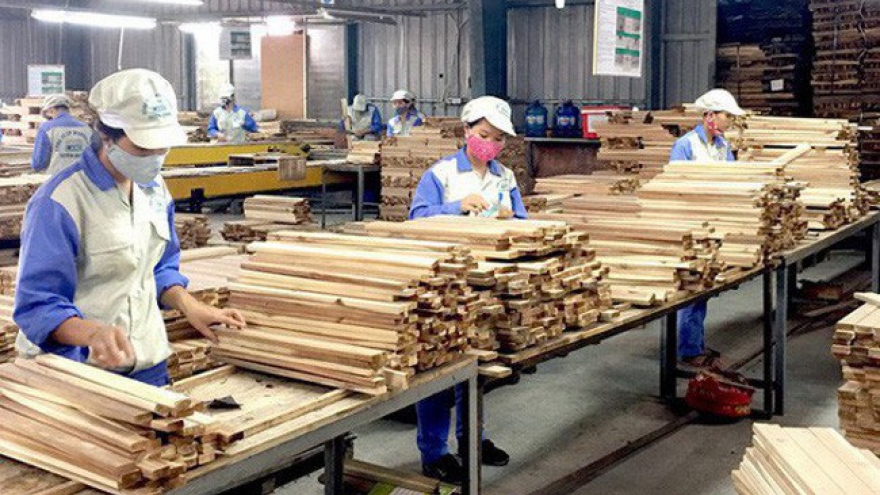Wood industry seeks to crack down on disguised investment
VOV.VN - Despite foreign-invested enterprises (FDI) businesses playing an important role in the local wood industry, a number of disguised businesses have taken advantage of legal loopholes to cause injury to the genuine domestic industry, say industry insiders.
A recent report released by the Vietnam Timber and Forest Product Association (VIFOREST) indicates that the domestic wood industry welcomed 63 new projects with total registered investment capital of approximately US$327.7 million by the end of 2020. In addition, 174 businesses decided to increase their capital and buy shares totaling US$244.8 million. These figures prove that the industry continues to represent a magnet for FDI attraction.
The report also outlines that FDI wood enterprises last year outperformed their local rivals in terms of exports, as 653 FDI enterprises raked in US$6 billion while 2,676 local firms earned only US$5.9 billion from exports.
This outperformance can largely be attributed to the difference in production scale, technological level, investment capital scale, and market approach, according to experts in interviews with Vietnam News Agency.
“Undoubtedly FDI businesses are part and parcel of the Vietnamese wood processing industry,” says Dr. To Xuan Phuc, senior policy analyst of non-profit organisation Forest Trends. “However, several disguised FDI activities are posing a real risk to the domestic industry.”
Elaborating on the tactics that a number of FDI businesses use, Do Xuan Lap, chairman of VIFOREST, says foreign traders entering a company in the country can sublease a factory and sign a contract in the form of technical staff.
They then inject money into production lines by importing timbers subject to US-imposed anti-dumping tax, and processing them in Vietnam before re-exporting the products bearing Made-in-Vietnam trademarks back to the US to enjoy tax preferences.
Another form of disguised investment is that foreign businesses do not sign contracts to lease land or hire employees in Vietnam. Instead, they hire Vietnamese people to run the business.
Nguyen Liem, vice president of the Wood Processing Association of Binh Duong province, describes the situation as serious and says it is hard to address the matter.
At present, the US represents the most important export market for the Vietnamese wood industry, with the products shipped to the US last year making up over 60% of the country’s total export turnover. This means any market fluctuations in the US will exert an impact on the entire industry as well as its set target.
Le Trieu Dung, head of the Trade Remedies Authority of Vietnam, says his agency has asked businesses and craft associations to increase inspection and oversight in terms of product origin, especially during the customs clearance process, in order to nip in the bud any trade fraud. The agency has also requested businesses not to aid and abet any behavior of trade fraud that injures domestic production.
Economists have advised local authorities to carefully inspect FDI projects and only accept projects with high-content technologies. This should be done whilst simultaneously strengthening connectivity among craft associations, domestic enterprises, and genuine FDI enterprises to tighten supervision activities which will prevent trade fraud and disguised investment activities.



